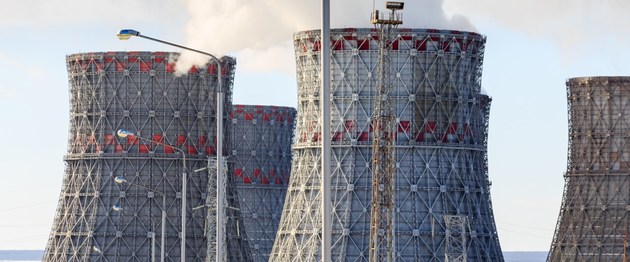The fuel may appear to be in terminal decline, but it remains the focus of Great Power competition, suggesting it is not dead yet. The energy transition is, to distil it to its core, a move to a lower and eventually zero-carbon energy mix, Petroleum Economist writes in the article Nuclear faces its own energy transition. But what might be the role for nuclear power, which is free of CO2 emissions?
At first glance, not a lot. Nuclea's popularity with the environmental lobby can be summed up by NGO Greenpeace’s successful campaign to get Germany to ditch it years before there was any momentum for the country to abandon its polluting thermal and brown coal industries. And, while wind and solar costs have fallen precipitously, the new generation of European pressurised reactors (EPRs) have proved an almost 20-year black hole of delays and hair-raising cost escalations.
But John Reilly, a prominent energy economist at US university MIT, rejects the idea that ever-cheaper renewables will inevitably squeeze out nuclear. “[S]ystem costs, which are being absorbed by the utility system because of how the regulations are structured… are likely to get higher as we get great penetration of intermittent renewables,” he says. Predictable, low-carbon generation—criteria nuclear meets—could still have a role to play.
Is cheap cheerful?
Similar in some ways to industries such as steel—where China’s approach of building cheaply, quickly and to a good-enough standard competes with more costly, full-bells-and-whistles facilities in traditional developed economies—the nuclear sector faces a divide. Advanced radioactive fission reactors are expensive to produce compared with cheaper and more utilitarian Chinese and Russian versions of older technology.
Safety is the watchword for the newer designs, as they seek to eliminate—or at least greatly reduce—all active cooling systems that require human intervention to keep the reactor stable. Among the more advanced prototypes is that developed by NuScale, a US firm funded by the country’s Department of Energy, which consists of prefabricated modular reactors that can easily be moved and scaled up to suit any local power need.
But the challenge is economic feasibility. Recent estimates by the US Energy Information Administration (EIA) project a cost of about $0.08/kWh for advanced nuclear power compared with somewhere in the region of $0.05/kWh for wind and solar power, and $0.03/kWh for coal and natural gas (figures vary widely among different plants).
Carbon taxes would need to be around $270/t in Europe and $330/t in the US for modern nuclear designs to compete with fossil fuels, according to energy technology consultancy Thunder Said Energy. Improvements to nuclear technology to drive down costs are badly needed, says Thunder Said CEO Rob West.
Shock of the old
“I think a big question is, will these advanced reactor designs get developed or will China end up marketing older light-water reactor designs to developing countries?” says Reilly. “Cost estimates I have seen for China suggest they can build and operate these for a cost comparable to coal power.”
Older nuclear reactor designs are cheaper but potentially less safe. They require constant human supervision and numerous active safety systems, and the Covid-19 pandemic further cemented the widespread conviction in the developed world that they need to be phased out.
In France, for example, which uses fission to generate about 70pc of its power, the lockdowns created staffing concerns at nuclear plants. But the low cost of more dated nuclear technology—as well as, in some cases, the possibility of nuclear proliferation it offers—has its own appeal, especially among customers in the developing world.
Russia has been just as creative as China, if not more so, in experimenting with different shapes and sizes of human-supervision reactors: in the past year, it sent a floating nuclear power station to the Arctic and had what was apparently a flying nuclear reactor prototype designed for military uses explode.
Fusion, finally?
Despite the ‘New Cold War’ aspects to this fission reactor competition, the longer-term future of nuclear energy may be brighter: the world’s first experimental fusion reactor, ITER in France, is expected to power up within five years. It is the dream-come-true of science-fiction writers and fans for almost a century, as it will fuse hydrogen atoms to create helium in a process that releases tremendous amounts of energy but no radiation—harnessing the very source of solar power, the process that fuels the Sun.
“Nuclear fusion is almost the perfect way to produce energy,” says Ian Chapman, the CEO of the UK Atomic Energy Authority (UKAEA), a public body focused on thermonuclear power. “The fuels are abundant in seawater, it does not emit carbon and has none of the safety drawbacks of fission.”
A major catch is that it will take many years before the prototype reaches the temperature necessary to start the reaction, which is of the order of 100mn°C. The UKAEA hopes to have its own rival prototype, called Step, running by 2040.
“New private sector fusion companies have attracted over $1.5bn of investment for innovative concepts that could accelerate timescales,” says Chapman. “So I am confident that nuclear fusion is entering the delivery era and that it will become a major part of world energy supply from the second half of this century onwards.”






